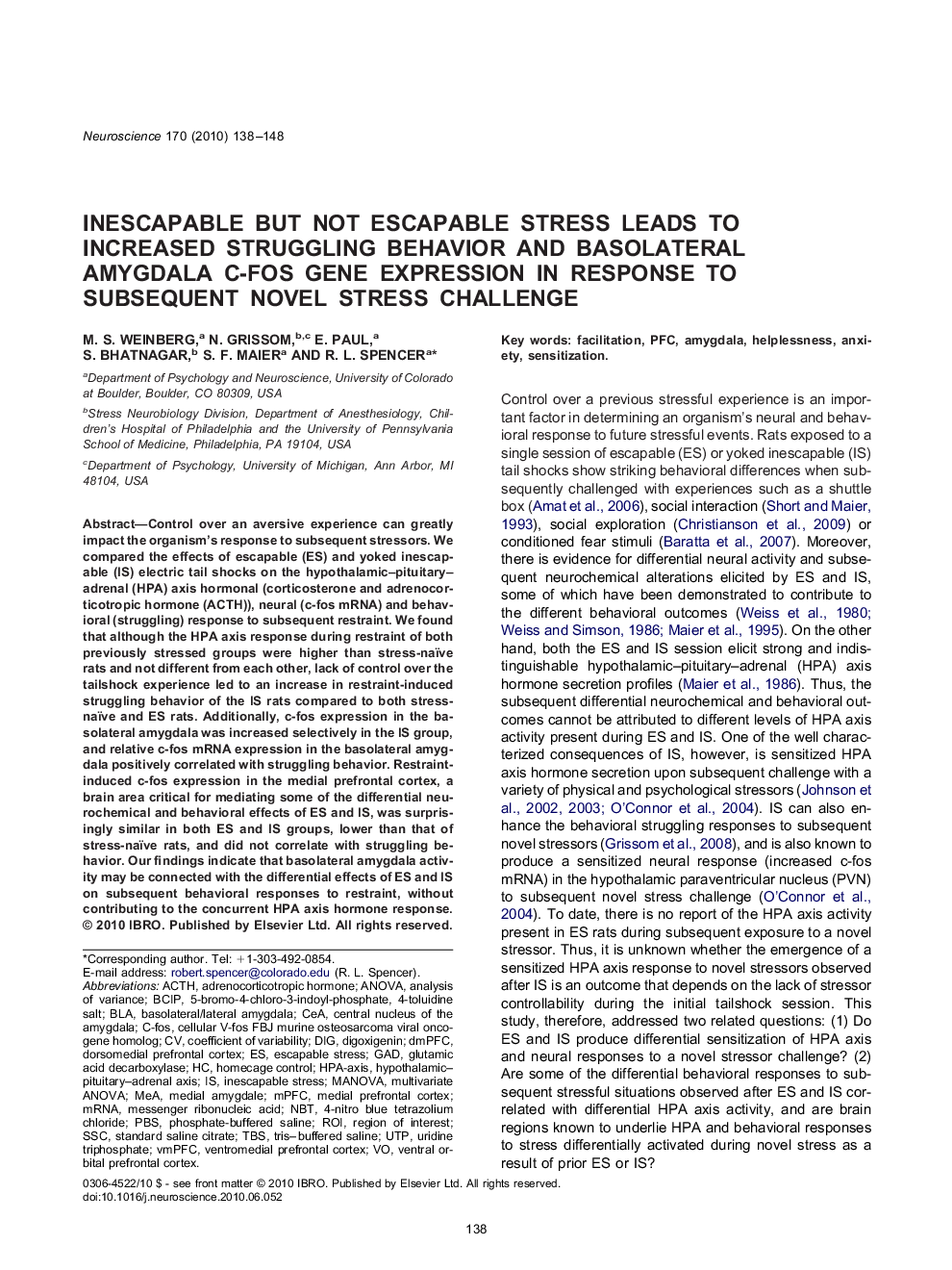| Article ID | Journal | Published Year | Pages | File Type |
|---|---|---|---|---|
| 6277193 | Neuroscience | 2010 | 11 Pages |
Abstract
Control over an aversive experience can greatly impact the organism's response to subsequent stressors. We compared the effects of escapable (ES) and yoked inescapable (IS) electric tail shocks on the hypothalamic-pituitary-adrenal (HPA) axis hormonal (corticosterone and adrenocorticotropic hormone (ACTH)), neural (c-fos mRNA) and behavioral (struggling) response to subsequent restraint. We found that although the HPA axis response during restraint of both previously stressed groups were higher than stress-naïve rats and not different from each other, lack of control over the tailshock experience led to an increase in restraint-induced struggling behavior of the IS rats compared to both stress-naïve and ES rats. Additionally, c-fos expression in the basolateral amygdala was increased selectively in the IS group, and relative c-fos mRNA expression in the basolateral amygdala positively correlated with struggling behavior. Restraint-induced c-fos expression in the medial prefrontal cortex, a brain area critical for mediating some of the differential neurochemical and behavioral effects of ES and IS, was surprisingly similar in both ES and IS groups, lower than that of stress-naïve rats, and did not correlate with struggling behavior. Our findings indicate that basolateral amygdala activity may be connected with the differential effects of ES and IS on subsequent behavioral responses to restraint, without contributing to the concurrent HPA axis hormone response.
Keywords
BLAMPFCc-fosDMPFCvmPFCBCIPNBTGADUTPTBSSSCACTHROImRNAmultivariate ANOVAPFCPBSMEA4-nitro blue tetrazolium chlorideCeAglutamic acid decarboxylaseAmygdalastandard saline citrateinescapable stressAnxietyMANOVAUridine triphosphateHelplessnessanalysis of varianceANOVATris–buffered salineFacilitationSensitizationdigoxigeninmessenger ribonucleic acidDIGcoefficient of variabilitymedial prefrontal cortexdorsomedial prefrontal cortexPhosphate-buffered salineHPA-axishypothalamic–pituitary–adrenal axisregion of interestcentral nucleus of the amygdalaadrenocorticotropic hormoneventromedial prefrontal cortex
Related Topics
Life Sciences
Neuroscience
Neuroscience (General)
Authors
M.S. Weinberg, N. Grissom, E. Paul, S. Bhatnagar, S.F. Maier, R.L. Spencer,
